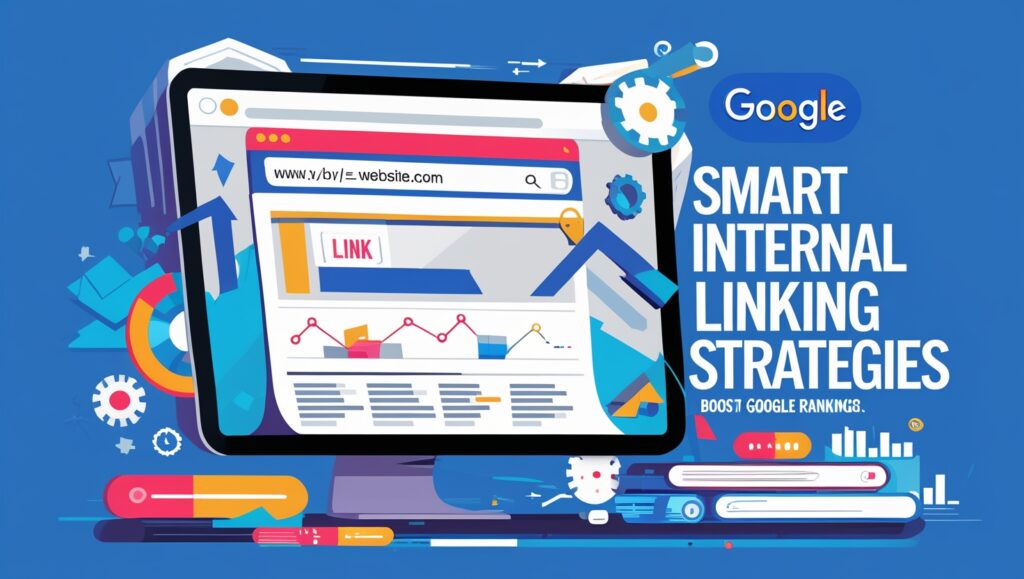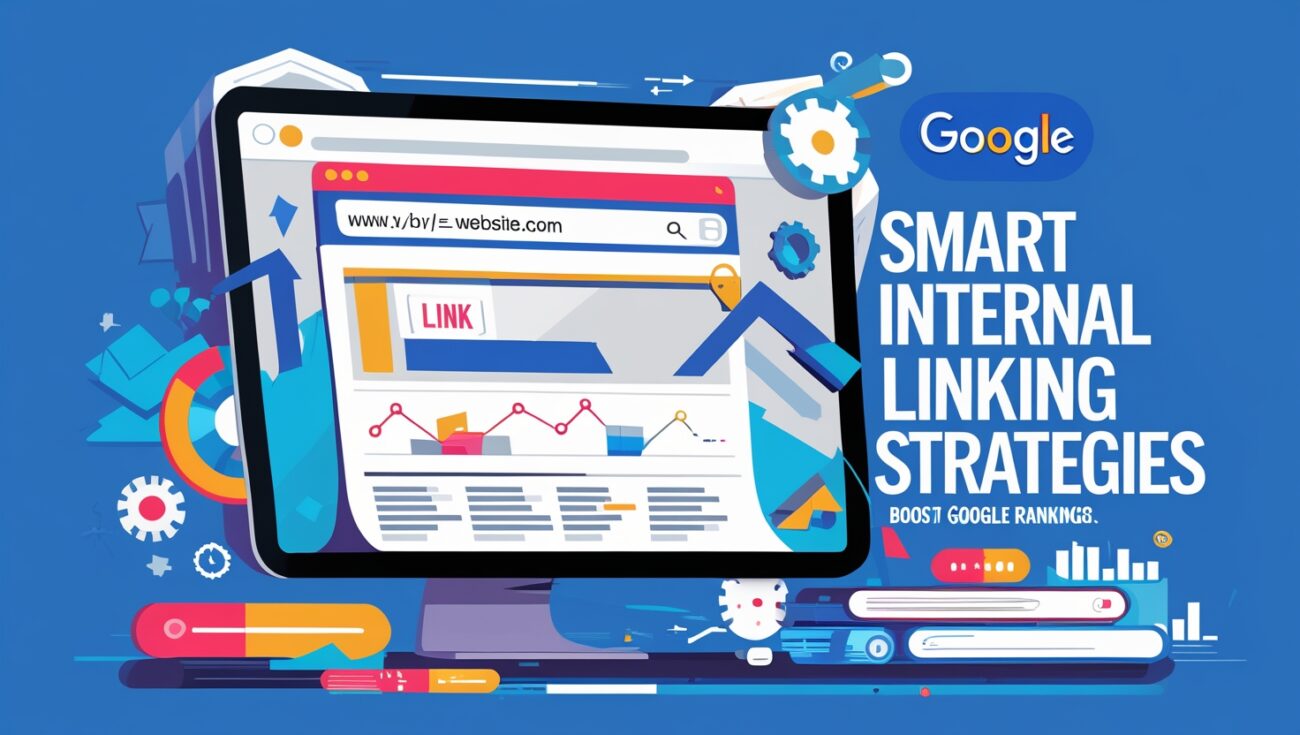Smart Internal Linking Strategies That Boost Google Rankings
Everyone in SEO knows that internal linking is important. But in my experience, most people do it wrong. They’ll drop a few links here and there without a plan, hoping for the best. I used to be one of them. I’d spend hours on my website, adding links to new posts, and wonder why I wasn’t seeing the ranking results I wanted. I realized that it wasn’t enough to just add links; I needed a strategy.

Table of Contents
The most successful websites don’t just add links—they build a purposeful, intelligent network. They use internal linking to signal authority, create topical relevance, and boost the pages that matter most. If you’re ready to move beyond the basics and start building an internal linking strategy that gets real results, these are the techniques I use.
Strategy #1: The Pillar Page & Topical Cluster Model
This is arguably the most powerful internal linking strategy you can implement. It’s the difference between a collection of individual articles and a cohesive, authoritative resource.
- How it Works: You create a central pillar page that serves as a comprehensive guide on a broad topic (e.g., “The Ultimate Guide to Content Marketing”). Then, you write dozens of supporting articles on specific, related sub-topics (e.g., “How to Write a Great Headline,” “10 Free Content Promotion Strategies”). You then link every single supporting article to the pillar page, and the pillar page links back out to the supporting articles.
- Why it Works: This model creates a clear “topical cluster” that signals to Google that you are a comprehensive expert on the subject. This boosts the rankings of all pages in the cluster and establishes your authority.
Strategy #2: The Orphaned Page Rescue Mission
An orphaned page is a page on your website with no internal links pointing to it. It’s an SEO tragedy, because no matter how good the content is, it’s invisible to search engine bots.
- How it Works: You need to audit your site to find these orphaned pages and then add at least one contextual link from another relevant page. The best strategy is to link to the orphaned page from a high-authority page on your site.
- Why it Works: This simple fix passes valuable link equity to the orphaned page, giving it the boost it needs to start ranking. I’ve seen this lead to huge, overnight traffic spikes for pages that were previously getting no organic traffic. A tool can help you easily find and rescue your orphaned pages.
Strategy #3: The Internal Broken Link Audit
Broken internal links are a silent killer of SEO. They create a poor user experience and they waste valuable link equity that could be passed to a different page.
- How it Works: You need to regularly audit your website for broken internal links. Once you find them, you can either fix the link or remove it. Better yet, find a relevant, high-value page on your site and redirect that broken link’s authority to it.
- Why it Works: Fixing a broken link is one of the fastest SEO wins you can get. You instantly recover lost link equity and guide both users and search engines to a valuable destination. I use a tool that automatically finds all of my broken internal links for me.
Strategy #4: Strategic Anchor Text Optimization
The anchor text is the clickable part of a hyperlink. Most people use generic phrases, but they are missing a huge opportunity.
- How it Works: You need to be intentional with your anchor text. Instead of “read more here,” use descriptive phrases like “how to build a powerful internal linking strategy.” The words you use provide a crucial signal to Google about the topic of the destination page.
- Why it Works: Strategic anchor text helps Google understand what your content is about, which helps it rank for relevant keywords. It also improves user experience by setting a clear expectation.
Putting It All Together: The Secret to Scaling
I know what you’re thinking: “This all sounds great, but it’s a lot of work.” And you’re right. Manually implementing these strategies on a large website is a monumental task. That’s why internal linking automation is the single most important thing you can do to scale your website. An automated tool can find all of your orphaned pages, broken links, and opportunities for a topical cluster in minutes, saving you countless hours every week. Ready to implement these powerful strategies and get real results? Discover how Linkbot can help you.
Conclusion: Build a Smart, Powerful Website
Internal linking isn’t just a basic SEO task; it’s a powerful tool for building a high-ranking, authoritative website. By implementing these smart strategies, you can stop wasting time on manual work and start building a purposeful, logical network that boosts your rankings and drives traffic for years to come.
My journey taught me that a major mistake is seeing SEO as a mystery. By implementing a smart, strategic internal linking strategy, I made the mental shift from being a spectator to an active participant in my website’s success. This simple realization took the overwhelm out of SEO and turned it into a series of logical, manageable steps that I could control.
The long-term, compounding effect of this strategic approach is what makes it so powerful. Each time you add a thoughtful, relevant link, you are not just performing a task; you are building your website’s authority, one link at a time. These small, consistent improvements add up to a significant competitive advantage over the long term, making your website an increasingly powerful asset.
I can say from personal experience that there is a special kind of satisfaction that comes from seeing a direct correlation between a new link and a ranking boost. It’s the feeling of taking a tangled mess and organizing it into a clean, logical network. The result is a website that just feels better to navigate, for both users and the people managing it.
A clean internal link profile also has a huge impact on your website’s overall trustworthiness and authority. When a user or a search engine bot lands on your page and sees a clear network of interconnected, relevant articles, it signals that you are a serious, comprehensive resource on the topic. This kind of professional organization is exactly what Google looks for.
The most important part of this foundational skill is building a consistent habit of linking. It’s not about a single audit and then forgetting about it. A good website is a living thing, and it needs regular maintenance to ensure your internal links stay clean, which is a key part of long-term SEO success.
I felt like I was finally in the driver’s seat of my SEO. For years, I had relied on external factors, which felt like I was giving up control of my SEO destiny. But by mastering a simple task like building my internal links, I was proactively building my site’s authority from the inside out, on my own terms, which was an empowering and exciting feeling.
By implementing a strategy that serves both SEO and conversions, you are also directly addressing Google’s E-E-A-T framework. You are demonstrating expertise by creating topical clusters, you are showing authority by linking from strong pages, and you are providing a better user experience, which is a key part of what Google looks for in a trustworthy website.
I’ll never forget the first time I applied my new internal link strategy to a page that was struggling to rank, and it shot up in the search results almost overnight. This was my “aha” moment. I realized that a strategic, well-placed link from a high-authority page was far more powerful than I ever thought possible.
One of the greatest benefits I got from using an automated tool to manage my link profile was the “to-do” list it provided. Instead of being overwhelmed by the sheer size of my website, the tool gave me a prioritized, actionable list of fixes to make. It transformed a monumental, frustrating task into a series of manageable steps that I could tackle in just minutes.
It’s crucial to understand the difference between a simple, generic link and a link that’s part of a strategic, mapped plan. A simple link is a one-off connection. A link that’s part of a plan is a purposeful part of a larger network, designed to pass authority and guide a user. The latter is far more powerful.
Ultimately, mastering internal linking is a simple but powerful strategy that transforms a website’s foundation. It’s a low-cost, high-impact fix that can instantly improve your site’s health and SEO performance. It’s the kind of foundational SEO work that every website owner should prioritize.
My final piece of advice is to not be intimidated. Don’t worry about the high cost of manual labor; just focus on making your website a better place for your readers. You will be amazed at the progress you make and the results you can achieve.

